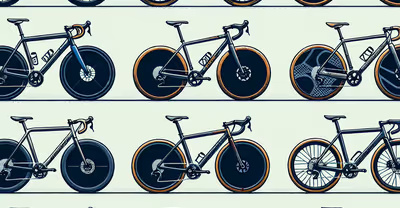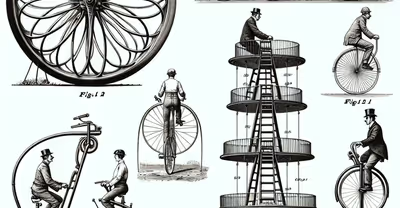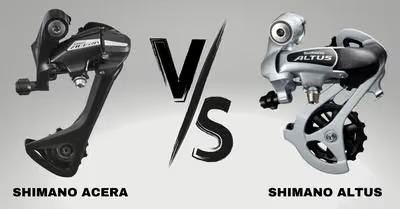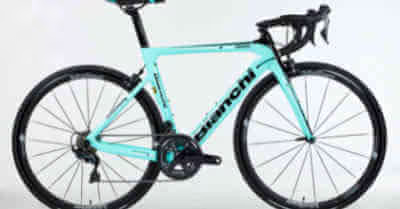
Key Takeaways
- Skateboarding demands a durable helmet, especially for multiple impacts.
- Bike helmets aren't ideal for skateboarding due to impact protection differences.
- Helmet safety standards are crucial for choosing the right protection for skateboarding.
- Recent innovations are bridging the gap between bike and skateboarding helmets.
Safety is paramount during skateboarding due to the inherent risks associated with the sport. But can you use a bike helmet for skateboarding?
Yes, you can use a bike helmet for skateboarding, but it’s not the safest choice. Bike helmets are designed to protect your head during high-speed impacts at a singular point of contact. Skateboard helmets, on the other hand, cater to multiple low-force impacts that are common in skateboarding.
With years of experience and a keen eye for the latest safety standards, I've got the insider scoop on how to protect that precious head of yours while you're shredding. I possess an in-depth understanding of the nuances of the sport, including the importance of protective gear and the specific requirements for helmets. As such, I’ll guide you through the nitty-gritty of helmets so you can focus on mastering your next kickflip worry-free.
Can You Use A Bike Helmet For Skateboarding?
The question of whether a bike helmet can be used for skateboarding is a common one among enthusiasts of both sports.
While both activities involve head protection, there are distinct differences in design and safety standards between bike helmets and those specifically engineered for skateboarding.
While you technically can use a bike helmet for skateboarding, it's not the safest choice. Bike helmets are designed to protect your noggin during high-speed impacts at a singular point of contact.
Skateboard helmets, on the other hand, cater to multiple low-force impacts that are common in skateboarding. They also provide better coverage around the back of the head, which is crucial since skateboarders often fall backward.
Let’s explore the reasons why bike helmets are not ideal for skateboarding.
Limited Coverage At the Back of the Head
Skateboarding helmets are meticulously designed to offer extensive coverage around the back of the head, a critical area prone to impacts during falls. This comprehensive coverage helps mitigate the risk of serious head injuries, such as concussions or skull fractures.
In contrast, many traditional bike helmets are tailored more towards forward motion falls commonly experienced in cycling, often resulting in less coverage at the back of the head.
This discrepancy in coverage leaves skateboarders susceptible to injury, particularly in scenarios where falls occur at angles or involve rotational forces.
Shape Less Suited For Varied Impacts
The distinct shape of skateboarding helmets reflects an understanding of the diverse and unpredictable nature of falls in the sport.
Unlike the elongated, aerodynamic design of bike helmets optimized for linear impacts, skateboarding helmets feature a rounder shape.
This rounded profile enhances protection against multidirectional impacts, which are prevalent in skateboarding due to the dynamic nature of tricks and maneuvers.
May Lack Skateboarding Safety Standards
Skateboarding helmets adhere to rigorous safety standards, such as ASTM F1492, specifically tailored to the unique demands of the sport. These standards encompass factors such as impact resistance, durability, and coverage to ensure adequate protection for skateboarders.
However, many bike helmets are certified solely according to cycling safety standards, such as CPSC 1203, which may not encompass the full range of requirements for skateboarding.
As a result, bike helmets lacking dual certification may not provide optimal protection during skateboarding falls, potentially increasing the risk of injury for riders.
Less Durability Against Skateboarding Abuse
The durability of skateboarding helmets is paramount, given the repetitive nature of impacts encountered during the sport.
To withstand the rigors of skateboarding, these helmets are constructed with a thicker shell and multi-impact foam materials.
This robust construction enhances longevity and ensures that the helmet maintains its protective qualities over time, even after sustaining multiple impacts.
In contrast, bike helmets are typically engineered to absorb a single impact and may not offer the same level of durability required for prolonged use in skateboarding scenarios.
Increased Ventilation, Weaker Structure
Ventilation is a key consideration in helmet design, particularly for activities like cycling that involve sustained physical exertion.
Bike helmets often feature larger vents and airflow channels to enhance breathability and comfort during extended rides.
However, this emphasis on ventilation can sometimes compromise the structural integrity of the helmet, potentially reducing its ability to withstand impacts.
In contrast, skateboarding helmets prioritize overall strength and structural integrity to ensure reliable protection, even in situations where ventilation may be less of a concern.
Limited Fit Adjustment Options
Achieving a proper fit is essential for maximizing the effectiveness of any helmet, particularly in high-risk activities like skateboarding.
Skateboarding helmets are typically equipped with a range of padding options and adjustable features to customize the fit and ensure a snug, secure feel.
This comprehensive fit adjustment system helps minimize movement and slippage during intense maneuvers, reducing the risk of the helmet shifting or coming loose upon impact.
While bike helmets may offer adjustable straps for basic fit adjustments, they may lack the same level of customization and fine-tuning options found in dedicated skateboarding helmets, potentially compromising overall safety and comfort for riders.
Lacks Skateboarding Certification
The dual certification of skateboarding helmets is a hallmark of their suitability for the sport, indicating compliance with both skateboarding and cycling safety standards.
This dual certification ensures that the helmet meets the specific requirements and performance criteria established for skateboarding, including impact protection, coverage, and durability.
In contrast, bike helmets lacking this dual certification may not undergo the same rigorous testing procedures or meet the stringent criteria necessary to withstand the unique demands of skateboarding.
As a result, riders who opt for uncertified bike helmets may inadvertently expose themselves to greater risk during skateboarding activities, emphasizing the importance of selecting certified helmets designed explicitly for the sport.
Innovations In Bridging Bike Helmets and Skateboarding Helmets
As the popularity of biking and skateboarding continues to rise so does the demand for safer and more versatile helmet designs.
Traditionally, biking helmets and skateboarding helmets have been distinct in their construction and features, tailored to the specific needs and requirements of each activity.
However, recent innovations have emerged in bridging the gap between these two types of helmets, offering users greater flexibility, comfort, and protection across various wheeled sports.
Let's break it down with a quick table to give you the clearest picture.
There you have it: a concise snapshot of how helmets are changing the game. Whether it's EPS foam that dissipates energy in one big 'poof!' or the tough EPP that bounces back, the focus is on keeping your noggin in one piece.
Let's not forget those multi-impact helmets that meet dual certification, so you can coast on your bike and then hit the half-pipe with the same helmet. It's all about the right foam for the job, and it looks like the job is getting more versatile.
Frequently Asked Questions
Let's dive right into those burning questions you have.
What should I look for in a helmet if I want to use it for both biking and skateboarding?
Your top priority should be finding one that holds certifications for both cycling and skateboarding—specifically CPSC 1203 and ASTM F1492 standards. This ensures the helmet is designed to withstand multiple types of impacts that are common in both sports.
What are the risks of using a bike helmet for activities like roller skating or ice skating?
Falls in these activities often involve different impact areas, so a skateboard-specific helmet—or one dual-certified for bikes and skateboarding—would be a safer bet.
How do full-face skateboard helmets compare to regular bicycle helmets in terms of protection?
Full-face skateboard helmets offer more extensive coverage and are specifically designed to protect not only your cranium but also your face and jaw. Regular bike helmets, on the other hand, do not provide the same level of facial protection.




















































































































































































































































































































































































































































































































































































































































































































































.avif)
